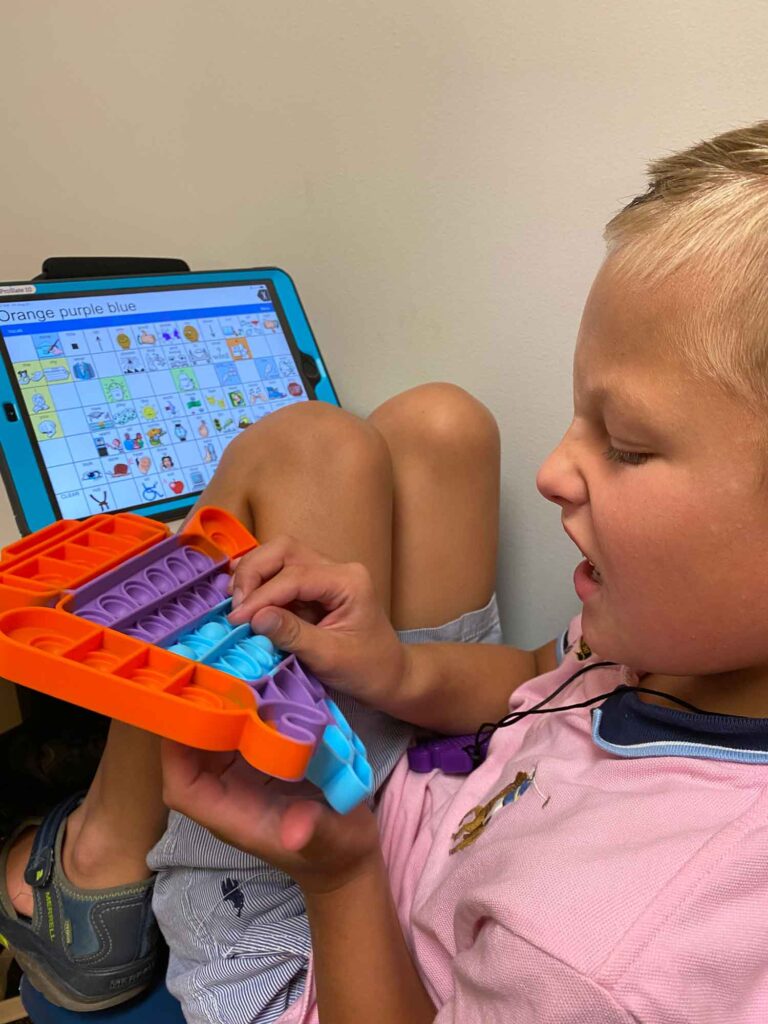AAC Research at Bridgeway Academy
September 10, 2021
Did you know…
…that scientific research takes place within the walls of Bridgeway Academy? Staff members Lindsey Paden Cargill, CCC-SLP and Samantha Lyle, CCC-SLP were recently published in The International Journal of Speech Pathology. This research was done in collaboration with Allison Bean and Alison Baker from OSU Department of Speech and Hearing Science.
ABSTRACT:
Purpose: Augmentative and Alternative Communication (AAC) provides an alternative means of communication for individuals who are unable to effectively communicate using spoken language. The present study seeks to investigate the role of proximity in facilitating AAC (specifically Speech Generating Devices; SGD) use in a homogeneous population: ambulatory school-aged children with autism spectrum disorder (ASD).
Method: Twelve school-age children with ASD who use an SGD as their primary mode of communication participated in the study. The percentage of time the child was within the proximity of their device was calculated over nine videotaped sessions and data logging provided information regarding device use over an 18-week period.
Result: Children were in proximity to their device 65% of the time. There was a significant positive correlation between percentage of time in proximity to device and the average minutes of device use on the day video recorded. Exploratory analyses revealed that communicative abilities may be more connected to proximity than school context.
Conclusion: These results support the importance of developing a program for assuring device proximity in order to encourage consistent device use in minimally verbal ambulatory school-age children with ASD.
